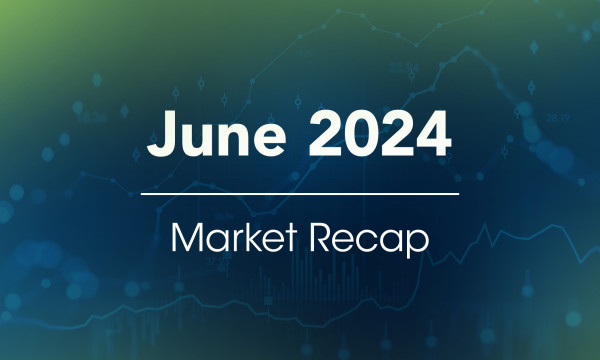Glossary of Investment-Related Terms

Active Management
The trading of securities to take advantage of market opportunities as they occur, in contrast to passive management. Active managers rely on research, market forecasts, and their own judgment and experience in selecting securities to buy and sell.
Aggressive
An investment approach that accepts above-average risk of loss in return for potentially above-average investment returns.
Asset Allocation
A method of investing by which investors include a range of different investment classes – such as stocks, bonds, and cash equivalents – in their portfolios. See: Diversification.
Balanced Fund
A fund with an investment objective of both long-term growth and income, through investment in both stocks and bonds.
Benchmark
An unmanaged group of securities whose performance is used as a standard to measure investment performance. Some well-known benchmarks are the Dow Jones Industrial Average and the S&P 500 Index.
Bond
A debt security which represents the borrowing of money by a corporation, government, or other entity. The borrowing institution repays the amount of the loan plus a percentage as interest. Income funds generally invest in bonds.
Bond Fund
A fund that invests primarily in bonds and other debt instruments.
Cash Equivalent
An investment that is short term, highly liquid, and has high credit quality.
Compounding
The cumulative effect that reinvesting an investment’s earnings can have by generating additional earnings of their own.
Conservative
An investment approach that accepts lower rewards in return for potentially lower risks.
Diversification
The practice of investing in multiple asset classes and securities with different risk characteristics to reduce the risk of owning any single investment.
Dividend
Money an investment fund or company pays to its stockholders, typically from profits. The amount is usually expressed on a per-share basis.
Dow Jones Industrial Average (Dow or DJIA)
A widely followed price-weighted index of 30 of the largest, most widely held U.S. stocks.
Emerging Market
Generally, economies that are in the process of growth and industrialization, such as in Africa, Asia, Eastern Europe, the Far East, Latin America, and the Middle East which, while relatively undeveloped, may hold significant growth potential in the future. Investing in these economies may provide significant rewards, and significant risks. May also be called developing markets.
Emerging Market Fund
A fund that invests primarily in emerging market countries.
Expense Ratio
A measure of what it costs to operate an investment, expressed as a percentage of its assets or in basis points. These are costs the investor pays through a reduction in the investment’s rate of return. See: Operating Expenses and Total Annual Operating Expenses.
Fund Family
A group or “complex” of mutual funds, each typically with its own investment objective, and managed and distributed by the same company. A Fund Family also could refer to a group of collective investment funds or a group of separate accounts managed and distributed by the same company.
Glide Path
The change over time in a target date fund’s asset allocation mix to shift from a focus on growth to a focus on income.
Growth Fund
A fund that invests primarily in the stocks of companies with above-average risk in return for potentially above-average gains. These companies often pay small or no dividends and their stock prices tend to have the most ups and downs from day to day.
Index
A benchmark against which to evaluate a fund’s performance. The most common indexes for stock funds are the Dow Jones Industrial Average and the Standard & Poor’s 500 Index.
Index Fund
An investment fund that seeks to parallel the performance of a particular stock market or bond market index. Index funds are often referred to as passively managed investments.
Inflation
The overall general upward price movement of goods and services in an economy. Inflation is one of the major risks to investors over the long term because it erodes the purchasing power of their savings.
International Fund
A fund that invests primarily in the securities of companies located, or with revenues derived from, outside of the United States.
Large Capitalization (Cap)
A reference to either a large company stock or an investment fund that invests in the stocks of large companies.
Large Cap Fund
A fund that invests primarily in large cap stocks.
Liquidity
The ease with which an investment can be converted into cash. If a security is very liquid, it can be bought or sold easily. If a security is not liquid, it may take additional time and/or a lower price to sell it.
Management Fee
A fee or charge paid to an investment manager for its services.
Market Risk
The possibility that the value of an investment will fall because of a general decline in the financial markets.
Mid Capitalization (Cap)
A reference to either a medium sized company stock or an investment fund that invests in the stocks of medium-sized companies.
Mid Cap Fund
A fund that invests primarily in mid-cap stocks.
Money Market Fund
A mutual fund that invests in short-term, high-grade fixed income securities, and seeks the highest level of income consistent with preservation of capital (i.e., maintaining a stable share price).
Morningstar
A leading mutual fund research and tracking firm. Morningstar categorizes funds by objective and size, and then ranks fund performance within those categories.
Mutual Fund
An investment company registered with the SEC that buys a portfolio of securities selected by a professional investment adviser to meet a specified financial goal (investment objective). Mutual funds can have actively managed portfolios, where a professional investment adviser creates a unique mix of investments to meet a particular investment objective, or passively managed portfolios, in which the adviser seeks to parallel the performance of a selected benchmark or index.
NASDAQ
The National Association of Securities Dealers Automated Quotation, also called the “electronic stock market.” The NASDAQ composite index measures the performance of more than 5,000 U.S., and non-U.S. companies traded “over the counter” through NASDAQ.
Passive Management
The process or approach to operating or managing a fund in a passive or non-active manner, typically with the goal of mirroring an index. These funds are often referred to as index funds and differ from investment funds that are actively managed.
Portfolio
A collection of investments such as stocks and bonds that are owned by an individual, organization, or investment fund.
Rate of Return
The gain or loss on an investment over a period of time. The rate of return is typically reported on an annual basis and expressed as a percentage.
Rebalance
The process of moving money from one type of investment to another to maintain a desired asset allocation.
Risk
The potential for investors to lose some or all the amounts invested or to fail to achieve their investment objectives.
Risk Tolerance
An investor’s ability and willingness to lose some or all of an investment in exchange for greater potential returns.
Share
A representation of ownership in a company or investment fund.
Share Class
Some investment funds and companies offer more than one type or group of shares, each of which is considered a class (e.g., “Class A,” “Advisor” or “Institutional” shares). For most investment funds, each class has different fees and expenses but all of the classes invest in the same pool of securities and share the same investment objectives.
Small Capitalization (Cap)
A reference to either a small company stock or an investment fund that invests in the stocks of small companies.
Small Cap Fund
A fund that invests primarily in small-cap stocks.
Standard & Poor’s 500 Stock Index (S&P 500)
An index comprised of 500 widely held common stocks considered to be representative of the U.S. stock market in general. The S&P 500 is often used as a benchmark for equity fund performance.
Stock
A security that represents an ownership interest in a corporation.
Stock Fund
A fund that invests primarily in stocks.
Target Date Fund
A fund designed to provide varying degrees of longterm appreciation and capital preservation based on an investor’s age or target retirement date through a mix of asset classes. The mix changes over time to become less focused on growth and more focused on income. Also known as a “lifecycle fund.”
Ticker Symbol
An abbreviation using letters and numbers assigned to securities and indexes to identify them.
Time Horizon
The amount of time that an investor expects to hold an investment before taking money out.
Value Fund
A fund that invests primarily in stocks that are believed to be priced below what they are really worth.
|
Learning Center articles, guides, blogs, podcasts, and videos are for informational purposes only and are not an advertisement for a product or service. The accuracy and completeness is not guaranteed and does not constitute legal or tax advice. Please consult with your own tax, legal, and financial advisors.



